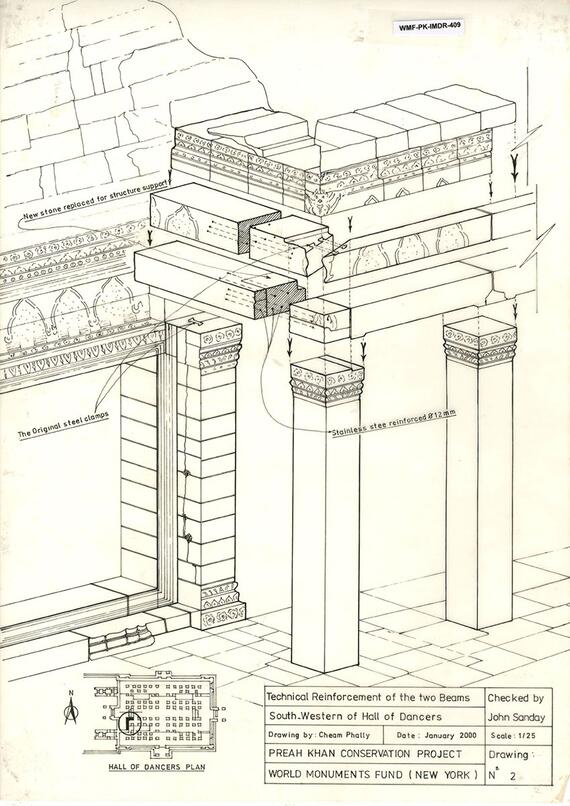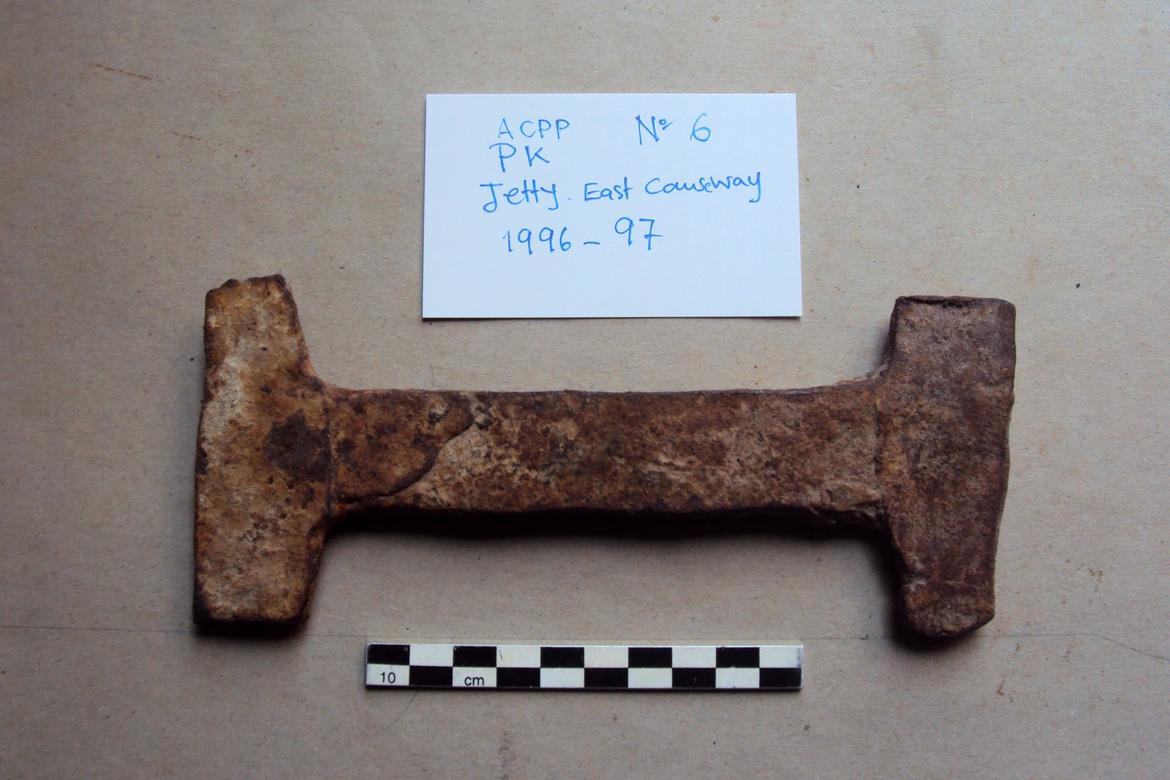Ironing the Wrinkles in the History of Angkor’s Metal Industries

Since the early 1990s WMF has worked to conserve the monastic complex of Preah Khan, making it possible for millions of visitors to enjoy the site. Over the years, we have been able to recover a number of iron clamps that were used in the construction of the monument. We were pleased to lend them for testing to researchers from Centre National de la Recherche Scientifique (CNRS-LAPA) and the University of Illinois at Chicago, who are now finishing a new study of Angkor’s metal industries.
Iron was a key resource for the Khmer kingdom, but it was not available near Angkor. Where did the iron for Preah Khan come from? The answer is that it had many different origins. The elemental composition of some clamps matches that of known sources of iron, such as Phnom Dek and other currently unknown sources.
The clamps consist of pieces that were welded together to form an I-shape, and the study also revealed that the components of a clamp often came from different sources. This may suggest that older metal pieces were reused, or simply that that the clamps were manufactured in one place using iron ore from different sources.
The clamps were found in Preah Khan’s Hall of Dancers, as well as in the small jetty on the edge of the Jayatataka Baray, to the east of the temple complex. Radiocarbon dating helped confirm what is known about the construction history of the monument: the samples from the Hall of Dancers are consistent with the construction date of 1191, as reported in the famous Preah Khan Stele, while the samples from the jetty post-date the reign of Jayavarman VII, indicating that this area was built at a later time.
In the next year, the researchers will analyze more I-shaped clamps, these ones from the nearby temple of Ta Som. Ta Som, lying on the opposite end of the Jayatataka Baray from Preah Khan, was also built by Jayavarman VII. But even though one might expect the iron clamps from the two sites to be the same, the samples from Ta Som display some tantalizing differences: they are of a different size, and do not appear to have been welded together, unlike the clamps from Preah Khan. What more can we learn from this next phase of research? My colleagues and I at WMF will be eager to share the newest findings once we have them.
Visit the Centre National de la Recherche Scientifique (CNRS-LAPA) website for more information.
Above image, caption: WMF’s drawing by our Project Coordinator (then Project Architect) Cheam Phally showing the location where iron clamps where originally inserted in the stone masonry.

